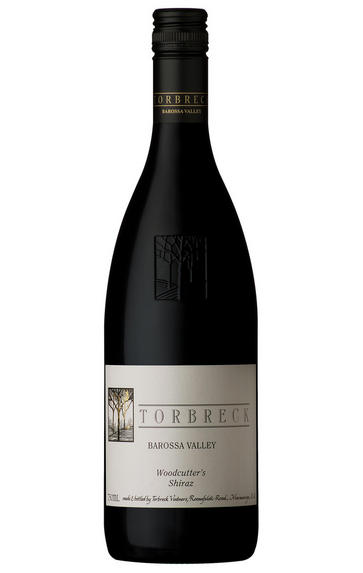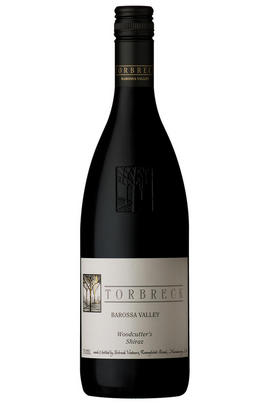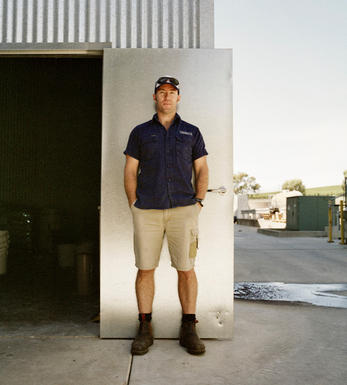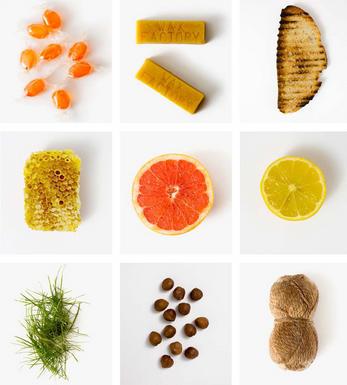
2018 Torbreck, Woodcutter's Semillon, Barossa Valley, Australia

About this WINE

Torbreck
Torbreck was established in 1994 and is located at Marananga on the western ridge of the Barossa Valley. It is named after a forest situated just south of Inverness in the Highlands of Scotland. Founded by David Powell, a former lumberjack who worked in various vineyards to hone his oenological skills, Torbreck’s first releases in 1997 of a 1995 Runrig (Shiraz/Viognier) and 1996 The Steading (Grenache/Mataro/Shiraz) were greeted with rapturous applause by critics and connoisseurs alike. The winery is overseen by Senior Winemaker Craig Isbel and his team.
The overwhelming majority of his vines are dry-grown, nearly all are 100 - 165 years old and are tended and harvested by hand. The wines have an extraordinary combination of power, intensity, complexity and great finesse.

Barossa Valley
Barossa Valley is the South Australia's wine industry's birthplace. Currently into its fifth generation, it dates back to 1839 when George Fife Angas’ South Australian Company purchased 28,000 acres at a £1 per acre and sold them onto landed gentry, mostly German Lutherans. The first vines were planted in 1843 in Bethany, and by the 1870s – with Europe ravaged by war and Phylloxera - Gladstone’s British government complemented its colonies with preferential duties.
Fortified wines, strong enough to survive the 20,000km journey, flooded the British market. Churchill followed, between the Wars, re-affirming Australia’s position as a leading supplier of ‘Empire wines’. After the Second World War, mass European immigration saw a move to lighter wines, as confirmed by Grange Hermitage’s creation during the 1950s. Stainless-steel vats and refrigeration improved the quality of the dry table wines on offer, with table wine consumption exceeding fortified for the first time in 1970.
Averaging 200 to 400 metres’ altitude, the region covers 6,500 hectares of mainly terra rossa loam over limestone, as well as some warmer, sandier sites – the Cambrian limestone being far more visible along the eastern boundary (the Barossa Ranges) with Eden Valley. Following a diagonal shape, Lyndoch at the southern end nearest Gulf St Vincent is the region’s coolest spot, benefiting from sea fogs, while Nuriootpa (further north) is warmer; hot northerlies can be offset by sea breezes. The region is also home to the country’s largest concentration of 100-year-old-vine Shiraz, Grenache and Mourvedre.
Barossa Valley Shiraz is one of the country’s most identifiable and famous red wine styles, produced to a high quality by the likes of Rockford, Elderton, Torbreck and Dean Hewitson. Grenache and Mourvèdre are two of the region’s hidden gems, often blended with Shiraz, yet occasionally released as single vineyard styles such as Hewitson’s ‘Old Garden’, whose vines date back to 1853. Cabernet Sauvignon is a less highly-regarded cultivar.
Wines are traditionally vinified in open concrete fermenters before being cleaned up and finished in American and French oak barrels or ‘puncheons’ of approximately 600 litres. Barossa Shiraz should be rich, spicy and suave, with hints of leather and pepper.

Sémillon
The main grape for Sauternes and particularly successfully grown in Australia's Hunter Valley. Hunter Valley Sémillon is one of Australia’s iconic and unique wines, totally unlike any wine produced elsewhere in the world from the same grape variety.
In youth the wines are quite citrusy and fresh, but are generally perceived to gain hugely in complexity as they age and are deemed to be best drunk when at least 5 years old, frequently lasting for 10 or more years. Unusually for Australia, the alcohol levels rarely exceed 11.5%.
In Bordeaux it is the most widely planted white grape and is blended with Sauvignon Blanc to produce the great long-lived dry whites of Graves as well as the great sweet wines of Sauternes. It is high in alcohol and extract and relatively low in aroma and acidity. Its thin skin makes it very susceptible to botrytis which is prerequisite for the making of Sauternes. It responds well to oak ageing and, while having a lightly lemony aroma when young develops lanolin flavours which some describe as "waxy", as well as a rich, creamy, intense, texture and a deep golden colour.


Buying options
Add to wishlist
wine at a glance
Delivery and quality guarantee